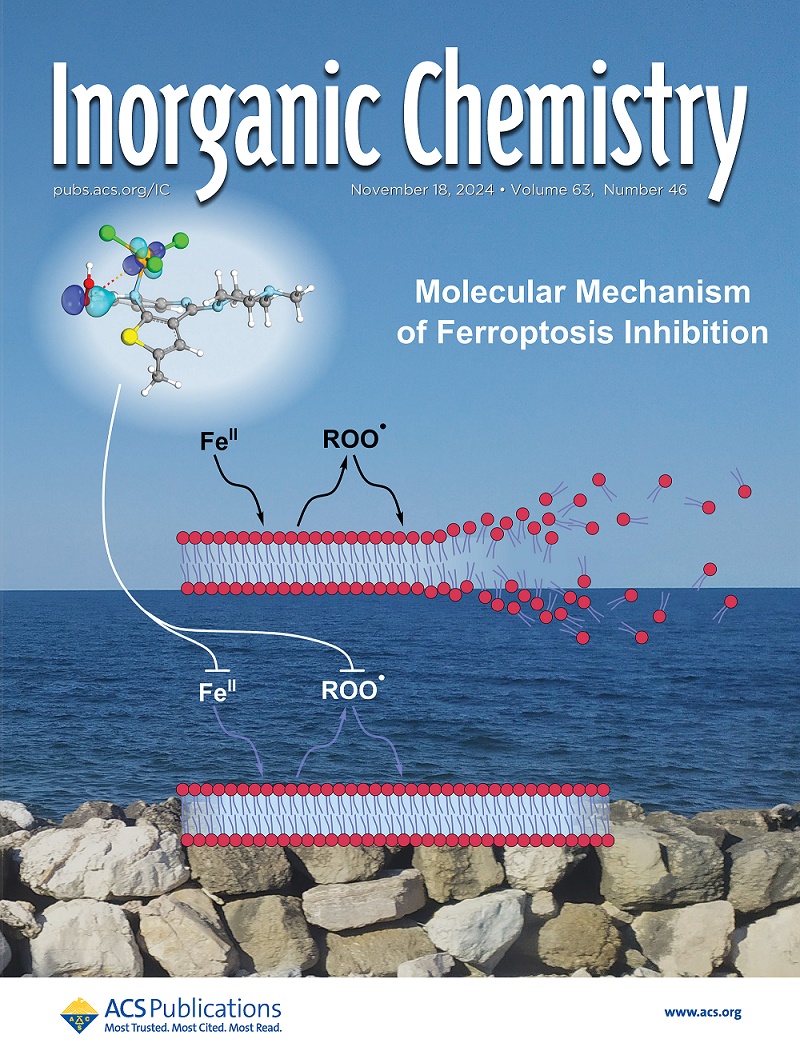Planar and Nonplanar Polymorphic Forms of Ni(II)-Porphyrin: Photophysical, Photocatalysis, and DFT Study.
IF 4.7
2区 化学
Q1 CHEMISTRY, INORGANIC & NUCLEAR
引用次数: 0
Abstract
Herein, we report the polymorphic forms of Ni(II)-tetra(4-bromo-2,6-difluorophenyl) porphyrin (1), which have applications in the photocatalytic conversion of indoline to indole under blue light. X-ray diffraction studies reveal that one polymorphic form of 1 (namely, 1α) stabilizes in the monoclinic system and has a planar geometry, while the other form (namely, 1β) has a nonplanar geometry and crystallizes in the tetragonal system. Due to their different conformations (planar and nonplanar), these polymorphs exhibit distinct solid-state properties. For instance, the solid-state absorption spectrum of 1β shows a broad absorption Soret band compared to 1α. Complementary theoretical studies show that compound 1α is energetically more stable than compound 1β by 16.5 kcal mol-1. In addition, electrostatic potential isosurfaces clearly reveal the presence of σ-holes on the bromine atom, indicative of halogen bond interactions in the crystalline state. The electronic structures of porphyrins directly influence the photophysical properties through two major effects: (a) porphyrin core geometry and (b) heavy atom effect (HAE). The photocatalytic study demonstrates the efficient conversion of indoline to indole using compound 1 in the presence of blue light.Ni(II)-卟啉的平面和非平面多晶形式:光物理、光催化和DFT研究。
本文报道了Ni(II)-四(4-溴-2,6-二氟苯基)卟啉(1)的多晶形式,它们在蓝光下用于吲哚啉到吲哚的光催化转化。x射线衍射研究表明,1的一种多晶形式(即1α)稳定在单斜晶系中,具有平面几何结构,而另一种多晶形式(即1β)具有非平面几何结构,在四方晶系中结晶。由于其不同的构象(平面和非平面),这些多晶表现出不同的固态性质。例如,1β的固态吸收光谱显示出比1α更宽的吸收索瑞特带。互补理论研究表明,化合物1α比化合物1β能量稳定16.5 kcal mol-1。此外,静电电位等面清楚地显示出溴原子上存在σ-空穴,表明在晶体状态下存在卤素键相互作用。卟啉的电子结构直接影响卟啉的光物理性质,主要有两个方面:(a)卟啉核的几何形状和(b)重原子效应(HAE)。光催化研究表明,在蓝光存在下,化合物1有效地将吲哚转化为吲哚。
本文章由计算机程序翻译,如有差异,请以英文原文为准。
求助全文
约1分钟内获得全文
求助全文
来源期刊

Inorganic Chemistry
化学-无机化学与核化学
CiteScore
7.60
自引率
13.00%
发文量
1960
审稿时长
1.9 months
期刊介绍:
Inorganic Chemistry publishes fundamental studies in all phases of inorganic chemistry. Coverage includes experimental and theoretical reports on quantitative studies of structure and thermodynamics, kinetics, mechanisms of inorganic reactions, bioinorganic chemistry, and relevant aspects of organometallic chemistry, solid-state phenomena, and chemical bonding theory. Emphasis is placed on the synthesis, structure, thermodynamics, reactivity, spectroscopy, and bonding properties of significant new and known compounds.
 求助内容:
求助内容: 应助结果提醒方式:
应助结果提醒方式:


